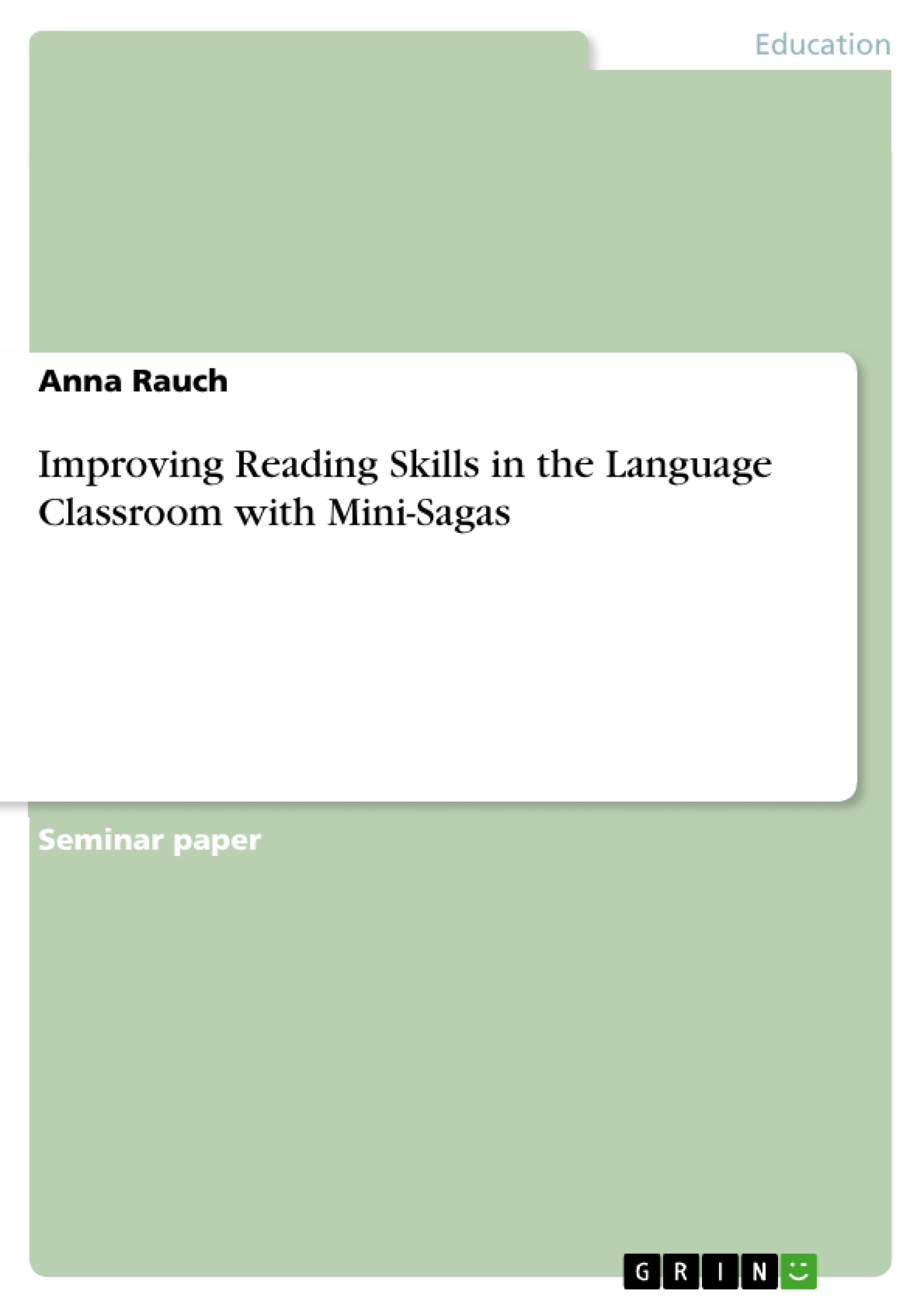The new developed genre of Mini-Sagas is, sadly, not really popular outside of the United
Kingdom. This realization leads me to introduce Mini-Sagas into a language learning
environment like schools for example. The following paper deals with Mini-Sagas as a new
and innovative genre for writers and readers. Up till today not many attempts have been
made to design tasks which involve Mini-Sagas as a text-stimulus. Outside of the annual
competitions which take place in the UK, they seem to have been forgotten in schools
outside Great Britain.
Firstly, the primary aim of this paper will be to explore the possibilities connected to Mini-
Sagas according to their learning and teaching potential with the main focus on improving
the learners’ reading skills. The tasks were designed by me, based on several teaching
handbooks concerning teaching English as a foreign language. As I was given the opportunity
to try out the tasks in practice and to improve my original approach by including helpful
suggestions concerning the strengths and weaknesses of the tasks, the paper should provide
the reader with an evaluation and discussion of the mentioned tasks. Furthermore, it should
describe the usage of Mini-Sagas in the language classroom according to their advantages
and how the students can benefit concerning reading as well as integrated skills. The first
paragraph will give a detailed overview of the basics of the genre Mini-Sagas and describe
the main characteristics of the text type, which are needed to understand the genre and the
presented tasks.
Inhaltsverzeichnis (Table of Contents)
- Introduction
- Mini-Sagas in General
- The Origin of the Genre
- Characteristics of the Genre
- Chosen Samples for Mini-Sagas
- Why Use Mini-Sagas in the Language Classroom?
- Mini-Sagas and Reading Skills
- Mini-Sagas and Integrated Skills
- Mini-Sagas and the CEFR
- Sample Tasks and Reflections
- Cloze-format to Improve Reading for Gist and Reading for Detailed Comprehension
- Jigsaw- Task to Improve Intensive Reading
- Raise Language Awareness through Reading Mini-Sagas
- Mini-Sagas and History
- Mini-Sagas and Creative Writing
- Conclusion
Zielsetzung und Themenschwerpunkte (Objectives and Key Themes)
This paper explores the potential of Mini-Sagas as a tool for improving reading skills in language learners. It aims to introduce Mini-Sagas as a novel and engaging genre for both writers and readers. The main focus is on designing tasks utilizing Mini-Sagas as a text stimulus, specifically for enhancing reading comprehension skills. The paper also delves into the broader application of Mini-Sagas in language learning environments, exploring their benefits for integrated skills development. Key themes explored in the paper include:- The origins and characteristics of the Mini-Saga genre
- The pedagogical value of Mini-Sagas for improving reading skills
- The integration of Mini-Sagas into language learning tasks
- The potential of Mini-Sagas for developing integrated skills in language learners
- The use of Mini-Sagas as a tool for raising language awareness
Zusammenfassung der Kapitel (Chapter Summaries)
The introduction provides a definition of Mini-Sagas and their unique characteristics. It outlines the objective of the paper, which is to explore the pedagogical potential of Mini-Sagas for improving reading skills in language learners. The chapter "Mini-Sagas in General" delves into the history and origin of the genre, tracing its roots to the Old Norse prose narratives and its modern invention by Brian Aldriss. It further explores the key characteristics of Mini-Sagas, emphasizing their concise nature, requirement for a punchline, and use of economic writing techniques. The chapter concludes with a discussion of different presentation styles and topics that Mini-Sagas can encompass. The section "Why Use Mini-Sagas in the Language Classroom?" examines the benefits of using Mini-Sagas in language learning environments. It highlights their potential for improving reading skills, fostering integrated skills development, and aligning with the Common European Framework of Reference for Languages (CEFR).
Schlüsselwörter (Keywords)
Mini-Sagas, reading skills, language learning, genre, integrated skills, CEFR, task design, language awareness, creative writing.- Quote paper
- Anna Rauch (Author), 2012, Improving Reading Skills in the Language Classroom with Mini-Sagas, Munich, GRIN Verlag, https://www.grin.com/document/272956



